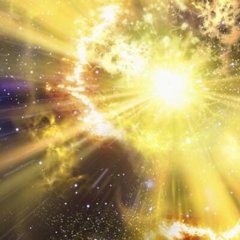-
Content count
3,364 -
Joined
-
Last visited
-
Days Won
3
About Harmonious Emptiness
-
Rank
nemesis: Erroneous Cleanliness
Recent Profile Visitors
21,289 profile views
-
The argument that it's just a matter of large or small animals doesn't hold up so well. The numbers are also quite different. I'd guess many of the same reasons mice escape the combines could be transferred to insects escaping them. Also, enormous amounts of grain is produced to feed livestock. https://www.theflamingvegan.com/view-post/Vegan-Mythbusting-1-Are-wild-animals-killed-when-grain-is-harvested-for-vegans "T & M then set those 33 mice free to munch on grain, scurry, groom their fur, build nests, or whatever. All through the harvesting season, they tracked their rodent gang. Guess how many died in a grain harvester? One. One out of 33 – that’s 3.3%. In other words, 96.67% of the mice on a harvested farm were not killed by cruel bladed machines. But 17 – that’s almost 50% - were killed by other critters – owls and weasels, to be more specific. Their radio collars were found on carcasses, or chewed up in burrows, or as fancy new toys for owlets. Statistically speaking, harvesting machines had virtually no impact at all. It’s interesting that Davis used this study and counted 18 dead mice, but didn’t care to factor in that 17 had died of predation. ... But why didn’t harvester machines kill those mice? Common sense tells you and me that since mice have ears and eyes and whiskers, when they see a huge, loud machine heading their way, they bolt for their lives - a prudent and successful strategy. Mice have perfected the art of escaping faster and stealthier things than harvester machines. Sure, baby mice in nests, or the old and infirm can’t do much, but most mice are quite adept at avoiding large, noisy things. ... They found that while the density of wildlife on farms was lower after the harvest, the numbers of animals in the forests had gone up significantly. That meant that when grain was harvested and their cover vanished, the animals abandoned the farms and moved to the shelter of forested areas close by. He assumed that producing food for meat eaters and vegans uses the same area of land. In fact, raising animals requires vastly more land and water than cultivating plants does. On average, meat production uses 16 times more land than producing vegan food of equivalent nutrition. ... But all this arguing over harvester machines overlooks an important fact: most of the world’s food production does not even use machines. You see, most of the world’s farmers live in the developing world. They farm small areas of land, which makes mechanized farming cost-prohibitive. Most of the world’s farmers plow their fields with water buffalo in Vietnam, oxen in India and donkeys in Kenya. Seeds are sown with rudimentary tools, pesticides are sprayed by hand pumps and irrigation channels are dug using picks and shovels. They use this produce to feed their families and sell the surplus at local farmer’s markets. Let me put it another way: most of the plant food eaten by humans is farmed without using machines – no tractors for plowing, no aircraft for spraying chemicals, and no grain harvesters. Crops raised for feeding meat animals, on the other hand …
-
Our bodies tend to flex and extend inwards and outwards. Flexing inwards means drawing everything forward and towards the center, so your shoulders come together in front, your palms turn backwards, and your hips and thighs turn inwards, all at once. This is a protective reflex, more common with women, especially in the hips and thighs. The opposite is to turn everything outwards, turning the palms forward, the shoulders out and back, the thighs open and the pelvis tilting up. This is an opening/exposing of the yin channels and requires different muscles than the closing. Try alternating from the closing in on exhales and opening on inhales, standing with your hands (which will turn in and out) at your sides. Post standing (zhuan zhang) strengthens the muscles used in the opening direction, especially in the hips (it's basically opening below the dantien and closing above it). Your toes grab the floor lifting the arches, opening the knees which should be at least shoulder width apart and directly above your feet. This helps to open the hips and tilt the pelvis so that your sacrum points to the ground. Your crown (baihui) should point up as you slightly push up and back from the occipital area below the base of the skull. Before standing, practice the opening and breathing stretch I mentioned above, then find the neutral position and hold it in the post standing. You could just stand like this in the wuji posture (hands at side), or holding the tree, or just stand while at the computer, etc. Some basic taiji walking with these points in mind could also help. As Steve said, it could be more structural, but even so, this will strengthen the neuromuscular circuitry. Be aware of any impulse to "close up" while doing this. It might make you feel somewhat exposed at first, which I'd say is a good sign that was a contributing factor. [edited to add part in parenthesis about opening below dt and closing above it]
-
Of course it isn't, but good luck with Daoist meditation if you haven't cultivated clear-minded attention and awareness of what's going on with your energy. Anyway, as stated in the author interview, hinted at in the book's description, and detailed in the book itself (which maybe you didn't actually read): "Heshang Gong’s commentary is widely valued in Daoism for revealing the internal cultivation metaphors in the Dao De Jing, and yet here are four texts (five counting the commentary section in Xin Shu Shang) from the 4th century BC showing these same connections – political metaphors for internal cultivation, jing, qi, and shen work, etc. They also show that Nei Gong was around long before significant cultural exchanges between China and India. Nei Ye is essentially an early term for Nei Gong, meaning “inner occupation/endeavour/cultivation/enterprising” rather than “inner work/skill (gong).” https://www.thedaobums.com/topic/46001-interview-with-dan-g-reid/?tab=comments#comment-807554 The book's concern with mindfulness is mainly to show that it existed in China before Buddhism arrived there, and how it figured in transmutation practices in the Guanzi. The essential premise of the book is that Daoist internal cultivation practices existed during the Warring States period, and are present in texts from that time. This is somehow a conflation of Daoism and Buddhism?
-
Que serra serra Being will be unbeing Unbeing will be
-
True, I should have clarified that I was referring to getting to a conversational level. You might not be able to read and write very well, but following the above with some enthusiasm, you can get to a very rough conversational level fairly fast. If you study full time in a class you'll probably be at about the same level, conversationally, in the same amount of time but you'll be able to read and write what you're saying as well.
-
Get the Duolingo app, and also the Learning Chinese (panda) app, and Pleco dictionary app (best by far). Also good: https://resources.allsetlearning.com/chinese/grammar/Grammar_points_by_level Put small stickers around your living space with character and pinyin names for things. Once you've gotten somewhere with the above, find some native Mandarin speakers who want to improve their English and start a weekly language exchange meet up. It's actually one of the easiest languages to learn. The only trouble is the tone issue, but when you get used to phrases you realize that you can tell the tones by recognizing the phrases/context. Also, do the Yoyo Chinese course to get a grasp of the inconsistencies in how you will hear Mandarin in the real world.
-

On Gift Giving, Receiving and Refusal by the teacher/healer
Harmonious Emptiness replied to qofq's topic in Daoist Discussion
I wouldn't take used chapstick. Chapstick is also full of chemicals I don't want to put on such a sensitive part of the body. It can cause irritation and dependence by making the lips more dry afterwards. Better to use oil from the side of your nose. Daoists often have VERY particular diets that cannot be casually imbalanced. Like a medicinal tea, if you add a little of something else, it might cancel out what you were trying to do. Same with possessions.. minimalism is appreciation because everything then has meaning. Mindless acquisition is to descend into meaninglessness. Or, maybe your shifu knew you would have those emotions and wanted you to confront them.- 26 replies
-
- healing
- engergetics
-
(and 1 more)
Tagged with:
-
Blowing in the wind Watch it go through the window Open minds unwind
-
I should add a caveat to that, however, that one should be careful not to overdo it with pickled veggies: "Yup, pickled vegetables. When Chinese hospitals started systematically tracking cancer incidence 50 years ago, they found that certain regions suffered from startlingly high rates of esophageal squamous cell carcinoma, a cancer of the cells lining the esophagus. Epidemiologists observed that people in these areas relied on fermented vegetables for nutrients for long parts of the year, when fresh veggies weren't available. Researchers now think the culprit is the fungi responsible for the fermentation process. As part of their natural life cycle, the microorganisms release a variety of possible carcinogens. Doctors have repeatedly attempted to substantiate the connection between pickled vegetables and cancer through clinical studies, with mixed results. But, taken as a whole, there does seem to be an association. A 2009 review of the existing studies conducted across Asia concluded that regularly eating pickled vegetables roughly doubles a person's risk for esophageal squamous cell carcinoma." http://www.slate.com/articles/news_and_politics/explainer/2011/06/the_who_says_cellphonesand_picklesmay_cause_cancer.html
-
Pickled mustard greens (ya cai) anyone? Rinse them well, chop them fine, and add them with the onion and garlic at the beginning. About as close as I've found to a veggie alternative to fish sauce. Fish sauce = SE Asian salt. Trick is to add less and cook a bit longer for a saltier effect.
-
Perfect harmony In the silent emptiness Of a mountain sky
-

Form of meditation of Lao tse and Chuang tse
Harmonious Emptiness replied to wandelaar's topic in Daoist Discussion
Sure, but the fact that so many examples exist, in itself, is part of the argument, and we can't get to that massive part of the argument without seeing all of the examples. That's why I'm not willing to begin a discussion based on 1% of the evidence. -

Form of meditation of Lao tse and Chuang tse
Harmonious Emptiness replied to wandelaar's topic in Daoist Discussion
@Stosh Okay, fair enough.. you go read an entire book and are still not convinced and I'm nowhere to continue the conversation.. I get that. But literally every 5-10 lines of the translations is followed by explanations and examples showing the same ideas in the Dao De Jing and other texts, often nearly word for word or otherwise thought for thought as contained in a chapter by Lao Zi. There's not much point in taking the time to show you one or two examples, which you might have a rebuttal for, and then continue doing that for 300 pages. Sorry, but I don't have that much time.












